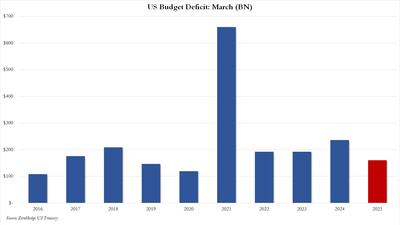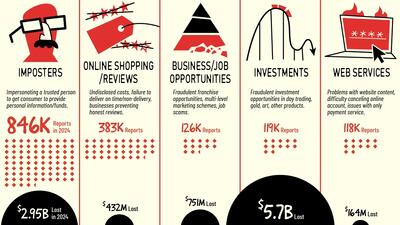Sponsored Content
London Blockchain Conference Opens with Impactful Message about Future of Internet
The world shifting to new technology does not happen overnight. In fact, it took 60 years for society to completely transition to producing goods using machines in what is known as the First Industrial Revolution. The Second Industrial Revolution or the Technical Revolution that paved the way for the mass production of products took another 50 years.
The Third Industrial Revolution or the Digital Revolution happened over a period of 46 years, from 1975 to 2021. Now, it’s time to prepare for the next industrial revolution that will thrust the world into the next era of technological advancement. Each of these periods is marked by the innovation of new technology that signaled the need for greater change.
The same is happening at present with the introduction of blockchain and other emerging technologies, such as IPv6, Web3, the metaverse and artificial intelligence (AI). Although it took many decades for the past industrial revolutions to take hold, the pace of innovation is becoming faster. Experts are now making informed predictions that the age of the new Internet may come within the decade.
With how the Internet and devices connected to it have changed the way people communicate, human interaction has become borderless. A person can now instantly speak and see another person from the opposite side of the world. The use of online systems, such as social media platforms, has become so ingrained in society that they are now considered necessities.
At present, the number of Internet users is estimated to be at 5.18 billion, which is 64.6% of the world’s total population. This number is expected to increase each year. While this means that the current Internet Protocol (IPv4) needs to scale in order to provide IP addresses to every gadget connected to the Internet, it also means that the data being generated by users will dramatically increase.
A study created by Statista shows that the volume of data created, copied, captured and consumed will reach a whopping 180 zettabytes (one zettabyte is equal to a trillion gigabytes) in 2025. The fundamental question to ask now is, “How can the present Internet and digital systems process, manage and store this growing amount of data?”
This question is at the crux of what the London Blockchain Conference is aiming to provide an answer to. Happening from May 31 to June 2 at the Queen Elizabeth II Centre, “the world’s largest enterprise and government blockchain conference series” is geared toward guiding people in how to solve real-world data problems. Because only when these data issues are resolved will the next industrial revolution truly begin.
Day 1 of the London Blockchain Conference opened with a speech from its producer, CoinGeek Media and Ayre Group Founder Calvin Ayre, followed by a keynote presentation by global blockchain research and development firm nChain CEO Christen Ager-Hanssen. Ayre briefly yet effectively detailed the role of blockchain in the future of the Internet, while Ager-Hanssen passionately explained how blockchain can empower people to take control of their own data.
Ayre believes that “the Internet’s arrival was a pivotal moment in history, but its evolution isn’t yet complete.” This is because “the Internet had to wait for the introduction of Internet Protocol 6 (IPv6)” in order to be able to scale to adapt to global demand. Widespread IPv6 rollout also had to wait for the innovation of technologies that will complement it and enable true IP-to-IP communication, which is instrumental in the transition from the current Web2 to Web3.
“Web2 took advantage of you individuals. You become a product, and you had no control. You were the product, and you were abused by these companies like Facebook, Instagram, all of these companies that turned you into the product and made money out of you,” Ager-Hanssen explained.
“Web3 is a completely different story. It’s a movement where we are empowering people. We are giving all their data in their hands to monetize their way and empowering them to have a voice in today’s society,” Ager-Hanssen added.
This complementary technology that can combine with IPv6 to make possible Web3 and other emerging technologies can only come in the form of a blockchain that can scale unbounded, which Ayre points out to be BSV. Because BSV restored the original Bitcoin design and locked its protocol, it allowed its blockchain to scale on demand—meaning data blocks and throughput can be increased as needed, while transaction fees are reduced to tiny fractions of a cent.
At present, BSV is already processing 4GB data blocks and a throughput of over 100,000 transactions per second (TPS) at an average fee of $0.000015 per transaction, with each transaction being completed within two seconds. These figures are a huge step up from BTC Blockchain’s 2MB data blocks, seven TPS and average fee of $4.43 per transaction.
Because of the extremely low throughput and data block size, BTC is prone to network crashes and latency, which also accounts for its volatile fees. It is obvious that it will not be able to keep up with even a tenth of the 180 zettabytes of data that is predicted to be generated by 2025. Only a blockchain that can continuously scale will do.
“[BSV’s] unique combination of unbounded scaling and ultra-low-cost transactions makes BSV the only technology capable of enabling successful interactions between all those humans, all those devices—not just in the present, but growing to meet global demand,” Ayre said.
To prove this, London Blockchain Conference business stage host Lucy Hedges, a technical journalist and travel specialist for the BBC, announced that BSV broke another record by completing over 86 million transactions in a single day. This number accounted for 95.2% of all blockchain transactions over the 24-hour period.
With visionaries like Ayre and Ager-Hanssen doing all that they can in order to secure the future of the Internet through global blockchain adoption, it is not unfounded to state that the Fourth Industrial Revolution will come sooner than people think.
NEVER MISS THE NEWS THAT MATTERS MOST
ZEROHEDGE DIRECTLY TO YOUR INBOX
Receive a daily recap featuring a curated list of must-read stories.
Trending on ZeroHedge

March Deficit Unexpectedly Tumbles To 5 Year Low As DOGE Cracks Down On Democrat Money-Laundering Schemes

These Are Most Common Types Of Fraud In America


